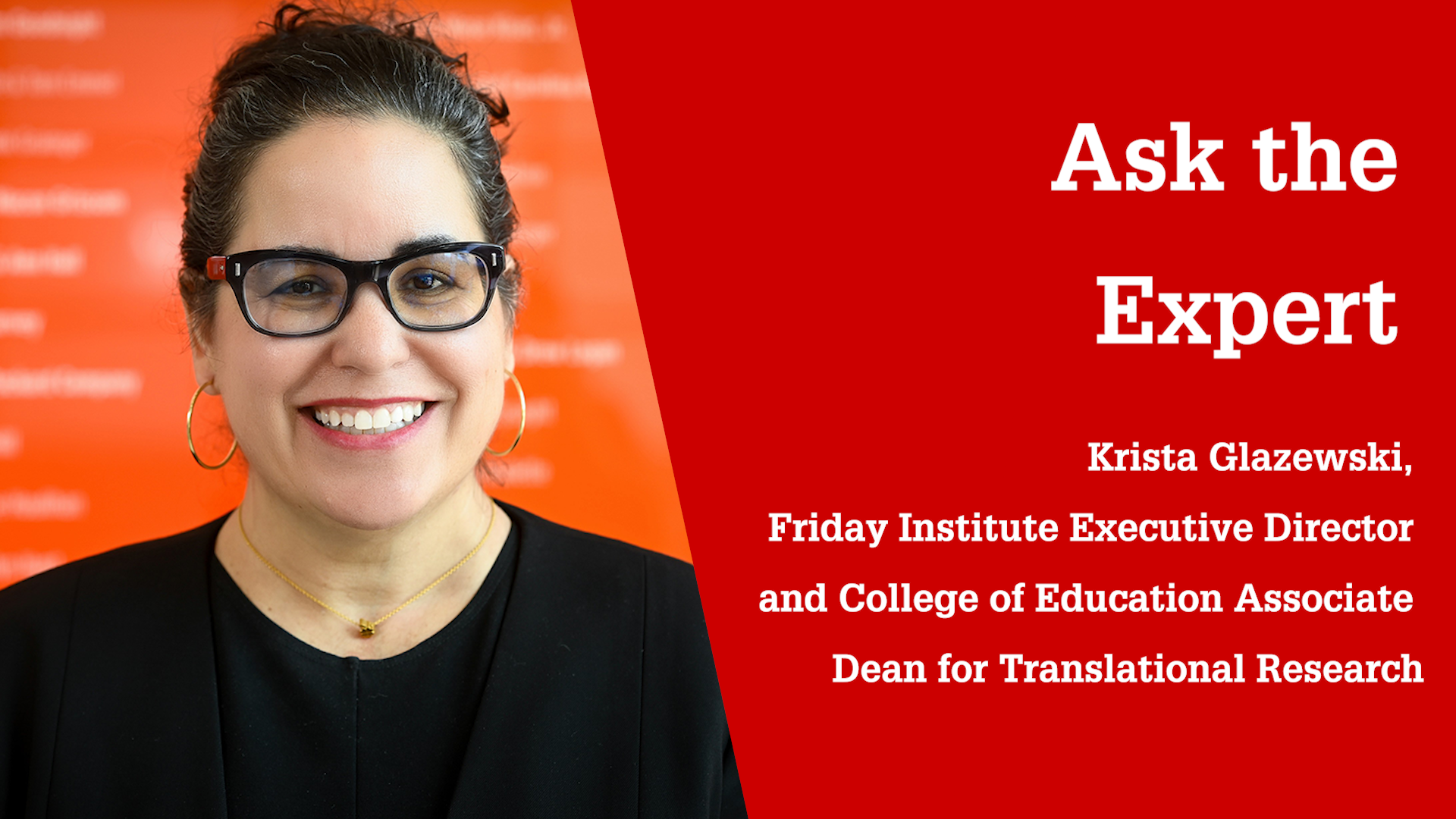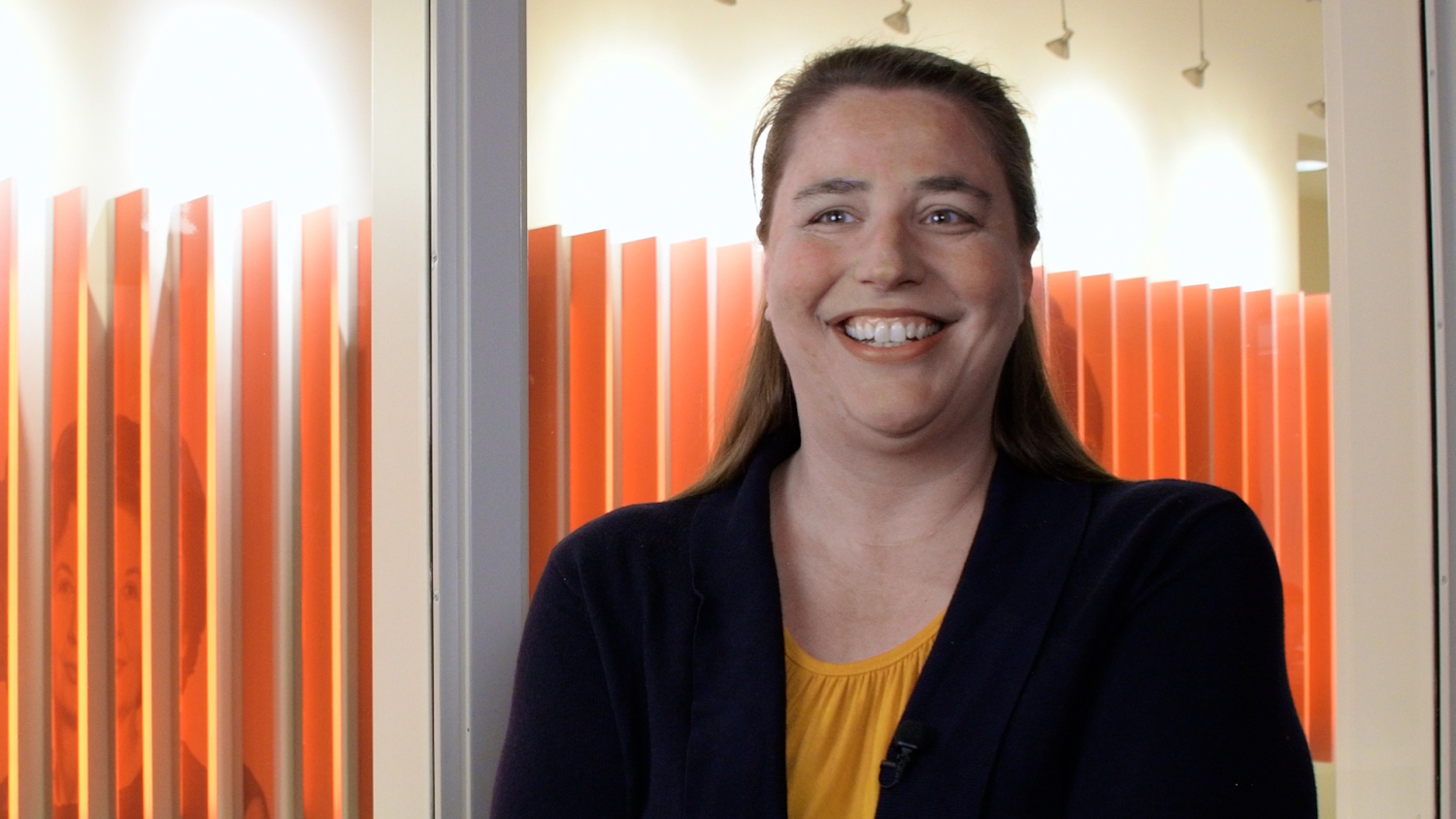How Can Teachers Integrate New Technologies Like AI Into the Classroom? ‘Be Open Minded and Take Risks,’ Says Friday Institute for Educational Innovation Executive Director and NC State College of Education Associate Dean for Translational Research Krista Glazewski

For more than 20 years, Friday Institute for Educational Innovation Executive Director and NC State College of Education Associate Dean for Translational Research Krista Glazewski has studied how complex problem solving can be supported through new, emerging and foundational technologies. Now, Glazewski said available technologies are finally catching up to practices and pedagogies that researchers and educators have envisioned.
“We’ve known for a long time what we’ve wanted technology to be able to do. For example, using technology to pre-plan scaffolding possibilities based on known difficulties among students,” Glazewski said. “Now, technology is reaching a point where we can reliably expect that it can accomplish some of those tasks and that frees the teacher to be able to do a lot more of the on-the-fly decision making and makes it much more possible for a teacher to be responsive in the moment.”
What Should Educators Know about Artificial Intelligence in Education?
One of the most talked about technologies in education right now, Glazewski said, is artificial intelligence (AI). Although the hype around AI has reached a peak recently, the technology has been present in education for about 30 years through applications like learning analytics and adaptive testing systems.
But, new advancements in AI are allowing the technology to support pedagogies that it previously could not. For example, if students are struggling to understand a concept, a teacher could use AI to generate a different example, with a different context, to help make the idea more concrete.
“AI is offering a lot of promise both for supporting learners in the classroom but also supporting teachers. I get pretty excited about how AI-assisted supports might help teachers do what they do differently or better,” Glazewski said.
AI also has a strong potential to support student inquiry, complex problem solving and collaborative group inquiry processes, Glazewski said.
Glazewski works on the National Science Foundation’s AI Institute for Engaged Learning, or EngageAI team, which is investigating how technology can be adaptive and responsive to students’ group processing and individual problem solving in real time. They’re using AI models to respond to students’ questions and needs, creating branching narratives within a game-based learning environment that combine to solve complex problems.
“One of the things that I get really excited about are the pedagogical models that really enable learning through problem solving,” she said. “Problem-based learning really offers a trusted approach that’s built on a long history of evidence and research. So, we can take these evidence-based approaches and use new technologies to help enable that.”
What Should Teachers Know About Integrating New Technologies Like AI?
When considering adopting new technologies for instruction, Glazewski said it’s important for educators to first consider student safety.
Checking into components like data privacy practices, as well as compliance with state and federal regulations like the Family Educational Rights and Privacy Act (FERPA) and the Children’s Online Privacy Protection Act (COPPA), is crucial.
Additionally, teachers should ensure that the data models that drive the systems are ethically curated and produced, and represent a full demographic range.
“A teacher should be really open and excited to try new things out, but also coordinate with their principal and their district offices to make sure that they’re in compliance with local, state and federal policy,” she said. “We need to have confidence in how the technology was built and to be able to understand that this was built in an ethical, transparent way that the company itself should be able to explain it.”
Most importantly for teachers, Glazewski said, is to keep an open mind when implementing new technologies and understand that the introduction of any new teaching practice takes time and practice, and comes with a bit of trial and error.
“I think the main thing is to just be open minded and take risks. All of these new strategies and technologies are going to involve some risk and probably some failure, so we also ask teachers to do what they would tell their students to do, which is learn from failure, move past it,” she said. “We aren’t going to get it all right the first time, but we are going to get it right.”
- Categories:


